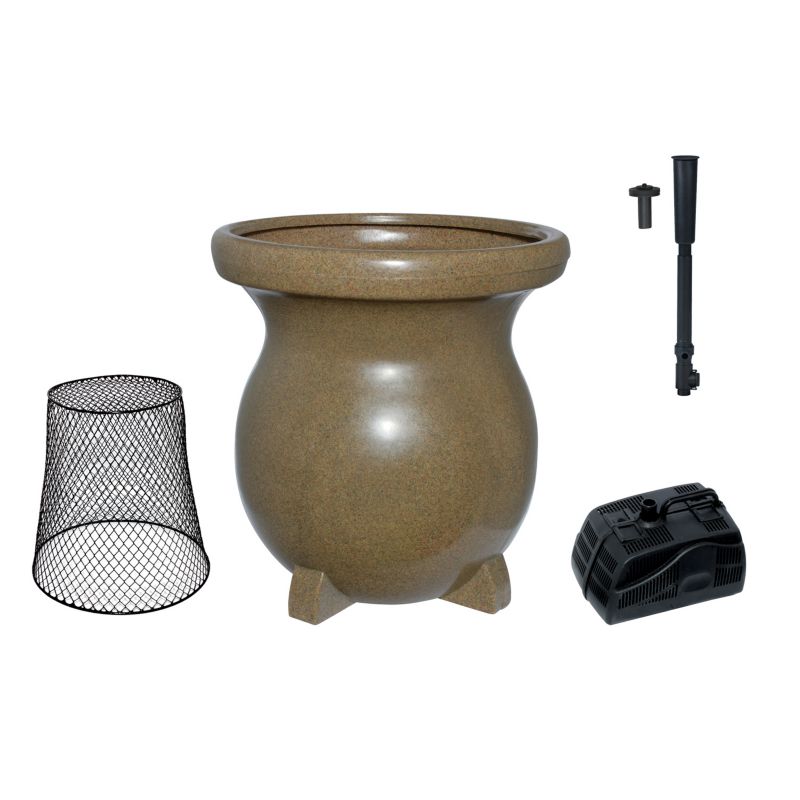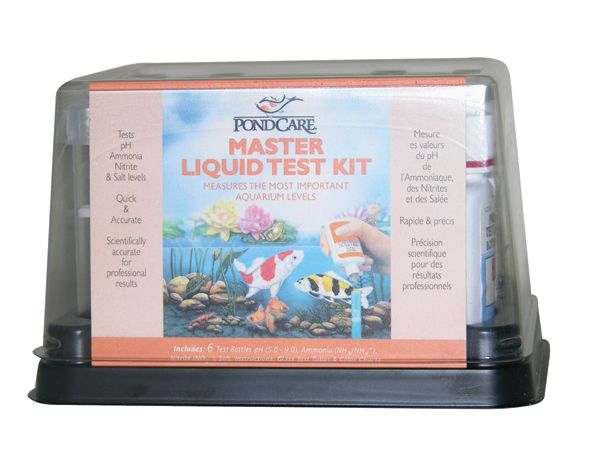Tag: water features
Add “Cool” with a Garden Fountain
by admin on Apr.17, 2013, under Images, Shop@RoseCottage
I’ll let these garden fountain images speak for themselves! Who would not like to add one to their yard or garden?
Fountains come in ALL shapes and sizes so you can easily add to or completely change the atmosphere of your outdoor living spaces.
This fountain will look great on almost any wall!
How about a fountain for an indoor space? This smaller fountain may be just right for a sunny corner window…
There are hundreds of options for fountains, statuary, bird baths, and other garden accessories available at Garden-Fountains.com. Look for free shipping on many items!
Plant Life for Garden Ponds – A Guide
by admin on Mar.23, 2013, under Favorites, Real Estate
Stocking your garden pond with the right kind of plant life is not only an exercise in aesthetics, but it’s also essential for the health of the water and any marine life within it. Locating your pond in a sunlit area will help the lifespan of your greenery, whilst setting it in early spring will give your plants the best chance of becoming established. You should endeavour to make at least a small area of your pond a meter or more in depth to provide shelter for pond life in very hot or cold weather.

Plants to Encourage
Bog plants are well suited to the marshy soil around the borders of the pond, conditions which can be enhanced by extending the pond liner under the first few feet of soil around the pond. Primula, water mint, horse tails and rushes grow well here.
Shallow water marginal plants include irises, rushes and sedges. Taller, grass like plants such as Sweet Flag and Baumea provide attractive greenery at the borders of a pond, and flowering plants like Baldellia and Buttercups provide colour. In deeper margins, flowering plants such as Pontederia Dilatata or Royal Pickeral, Sagittaria and larger rushes thrive. If you have a very large pond and want something spectacular, the South American Gunnera, which can grow up to 3 meters in height with a 4 meter spread, makes a showy statement.
Depending on the size of your pond, lilies and other deep water plants such as Nymphoides Peltata add interest, but these require an absolute minimum of two meters in depth. For smaller ponds, Pygmy water lilies are ideal.
Floating plants provide cover for fish and look wonderful even in smaller ponds, although it’s very important to select a species that will be happy with the space you have available. While some floating plants can go on to become rampant pests in open waterways, most can be controlled with proper care within the confines of a small pool. Salvinia has pretty bright green leaves, Water Hyacinths, which have rubbery foliage and delicate flowers, are also a good addition, as are rare natives like Stratiotes aloides. It’s important not to let deep water plants get too large, as they can take up too much oxygen.
Your pond will need oxygenators to provide food and cover for wild life as well as adding oxygen to the pond. Plants that grow too vigorously can upset the balance, so care must be taken here. Pondweeds, some of which produce small surface flowers in the summer, are a good start. Water Starwort has star-shaped rosettes of oval leaves that provide cover for aquatic insects, although it can be a little tricky to establish, Spike Rushes will do well in shallower ponds, and Water Violets produce beautiful tall flower stems.

Plants to Avoid
Some plants are best avoided, as they can grow rapidly and engulf the pond. Stay well clear of species like Water Primrose, Water Fern, Parrots Feather, New Zealand Pigmyweed, Floating Pennywort, Curly Waterweed, Canadian Pondweed and Nuttalls Pondweed. Unfortunately, additions of these plants are not always intentional, as ponds can be infected when water is transferred between them, or when water from an outside watercourse enters the pond. Look out for fast growing plants that you don’t remember planting, and if a plant appears to be taking over, identify it and research proper removal techniques for that species. If in doubt, DEFRA provides fact sheets and information on most invasive species.
Planting
In lined ponds, the best way to incorporate plants is to settle them into aquatic baskets. Use larger baskets for taller plants. Use aquatic potting soil, never regular potting compost, and top baskets off with gravel without burying the plant’s leaves. Water in well and gently lower the basket to its final position – larger plants may need to be moved down gradually as they grow.
Nurturing your Pond
Ponds that smell strongly are likely to be oxygen deficient and full of decaying matter, fish gulping near the surface or near water streams also indicate low oxygen levels. Vigorous algal growth means that there is too much carbon dioxide in the water. As well as looking out for these signs, it’s worth doing the occasional oxygen test and adding water balancers if needed. You can also use an aeration device such as a fountain to increase oxygenation.
Marginals need to be re-potted annually. Lift them gently from the water and remove any hitch-hikers. These plants can have very fragile roots, so take care not to damage them. For plants that grow in clumps, carefully remove and divide them into new, hessian lined pots. Regularly sieve out algae if it is growing too quickly and remove overgrown pondweed with a rake.
Prepare your pond for winter by cutting back vegetation to prevent falling leaves from accumulating in the pond and rotting, and remove fallen leaves periodically. Turn off fountains to reduce water disturbance, as fish will seek out warmer water at the bottom of the pond. If it freezes over, make holes using warm water (do not shatter the ice as it will cause shockwaves that disturb fish) to allow oxygenation. Switch to winter fish food such as wheatgerm pellets, as fish do not digest protein easily in cold weather.
Author: This post was written by Walter Bucket, the home and garden blogger from UK Water Features. When he’s not pondering over his ponds at home, he can be found designing garden wall art and topiary balls for gardens around the UK.
Pond Supplies – Keeping it Clean
by admin on Jun.02, 2012, under Favorites, Real Estate
Below are a few items that will come in handy at some point for anyone with a “water feature” on their property. Most are not high enough capacity or quantity for a 4-acre lake like mine, but for smaller ponds, etc., these are great ways to enjoy your water while keeping it clean and fresh!
We’re starting off with a great idea for anyone who wants to ADD a water feature – here’s one for under $100!
The Koolscapes Deck Pond Kit creates a Relaxing Environment with the Sound of Trickling Water.
The smartly designed Koolscapes Deck Pond Kit (with Stone Finish) combines the contemporary aesthetic of authentic stone with the enduring longevity of resin. The Koolscapes Deck Pond Kit with Stone Finish is ready to go. It comes with all that you need to set up, pump, riser, and fountain heads. The pond kit construction is UV protected, made to withstand harsh temperatures, at either extreme.
Dimensions: 21″H x 19″D
Aqua Shade Pond Dye is registered by the EPA for effective control of aquatic plant growth.
This is a unique blend of blue and yellow dyes that are specifically designed to screen or shade portions of the sunlight spectrum required by underwater plant and algae growth. This shading stops photosynthesis in young, bottom growth suppressing growth and development of nuisance conditions. A great blend of blue and yellow dyes . Effective at depths of two feet or greater . Inhibition of Planktonic (suspended) algae blooms has also been proven . Desirable, floating leaved plants such as lilies are unaffected.
NOTE: You’ll want to be very specific when looking at the item below. Make sure to buy the right size pump/filtration system for your water capacity. GPM (gallon per minute) sizes other than this shown below are available.
This Fish Mate Pressurized UV/BIO Filter (1000 Gallon) combines UV clarification and biological filtration to guarantee crystal clear, purified pond water.
These external filters can be buried underground or set above ground on a solid surface. Water flows through the filter in front of the UV light, which will cause algae to clump together ensuring clear water. The water then flows through specially developed filter sponge pads that will trap algae clumps and other large particles, then it will flow through the SUPRA biological filter media.
Before you get started on Summer 2012, a test for current water quality might be in order…
A Master Liquid Test/Kit An Essential For Any Water Gardener Pond Care Master Test Kit is a complete kit for testing either tap water or pond water.
Tests water 4 different ways to protect pond fish from dangerous water conditions. Tests include: pH, ammonia, nitrite, and salt. Kit contains instruction book, improved color cards for easier reading, 4 test tubes, and a holding tray.
This item cannot be shipped to either Connecticut or Rhode Island…
Garden.com has hundreds of items use in ponds and lakes – and about a thousand other products to enhance your time spent in the great outdoors!









